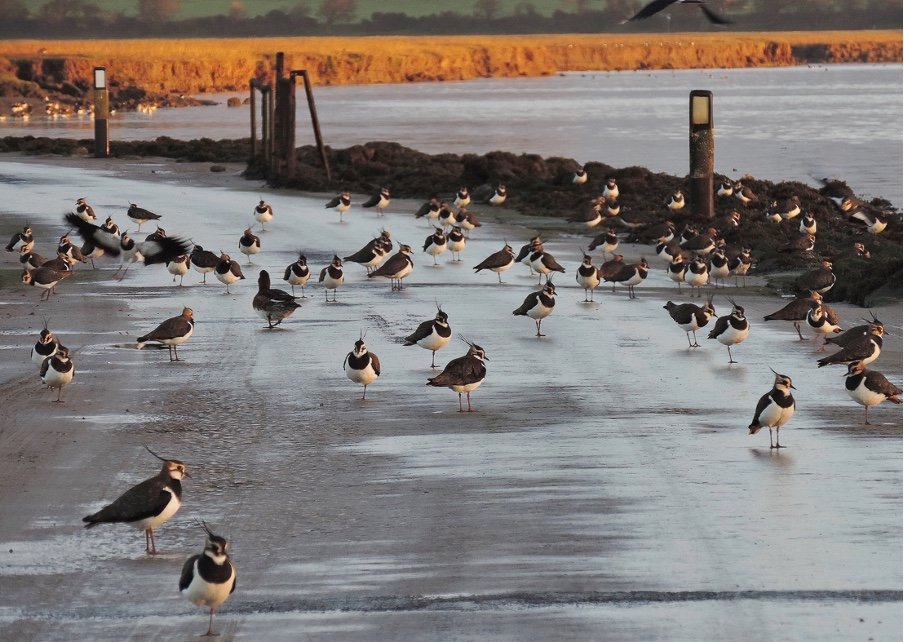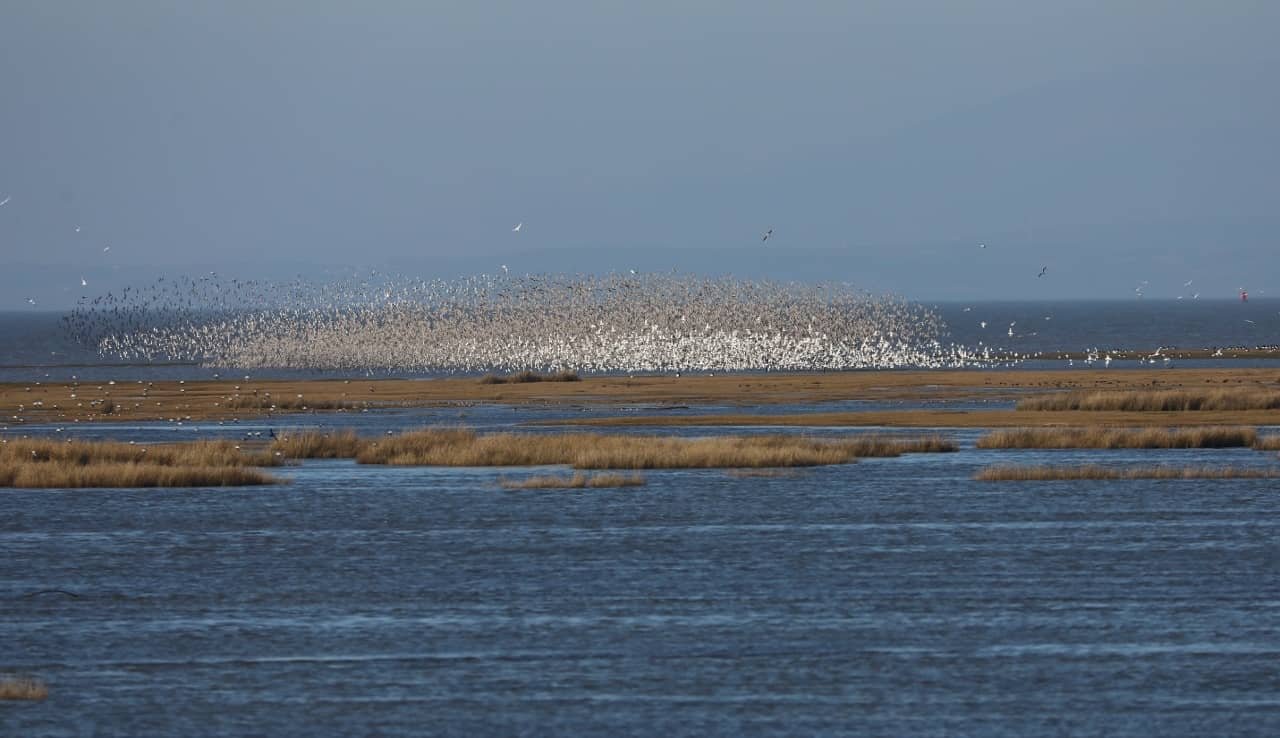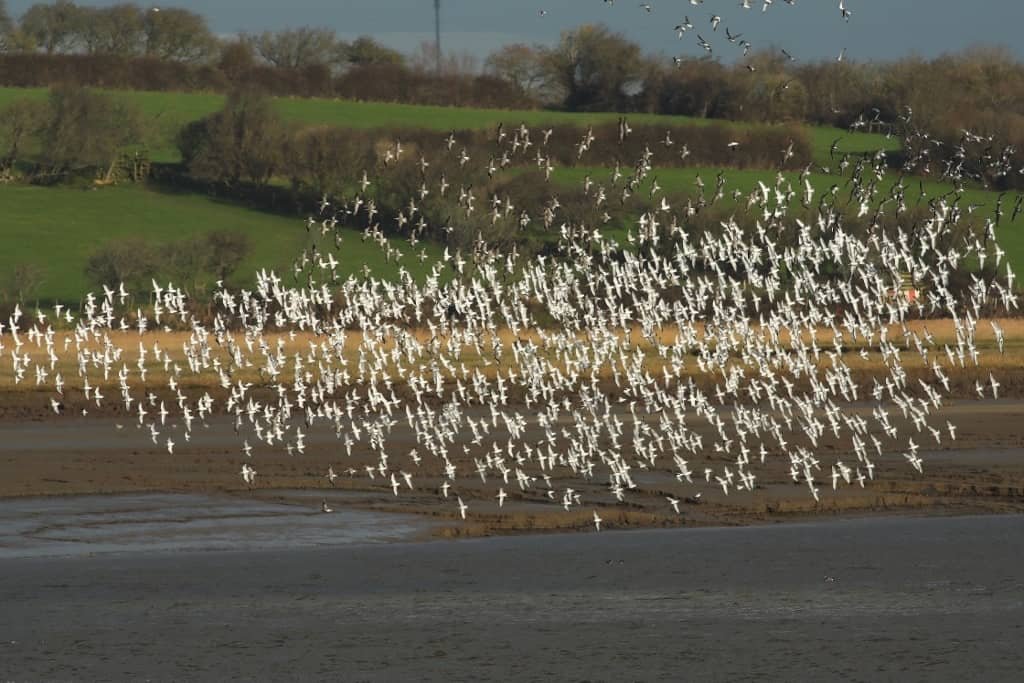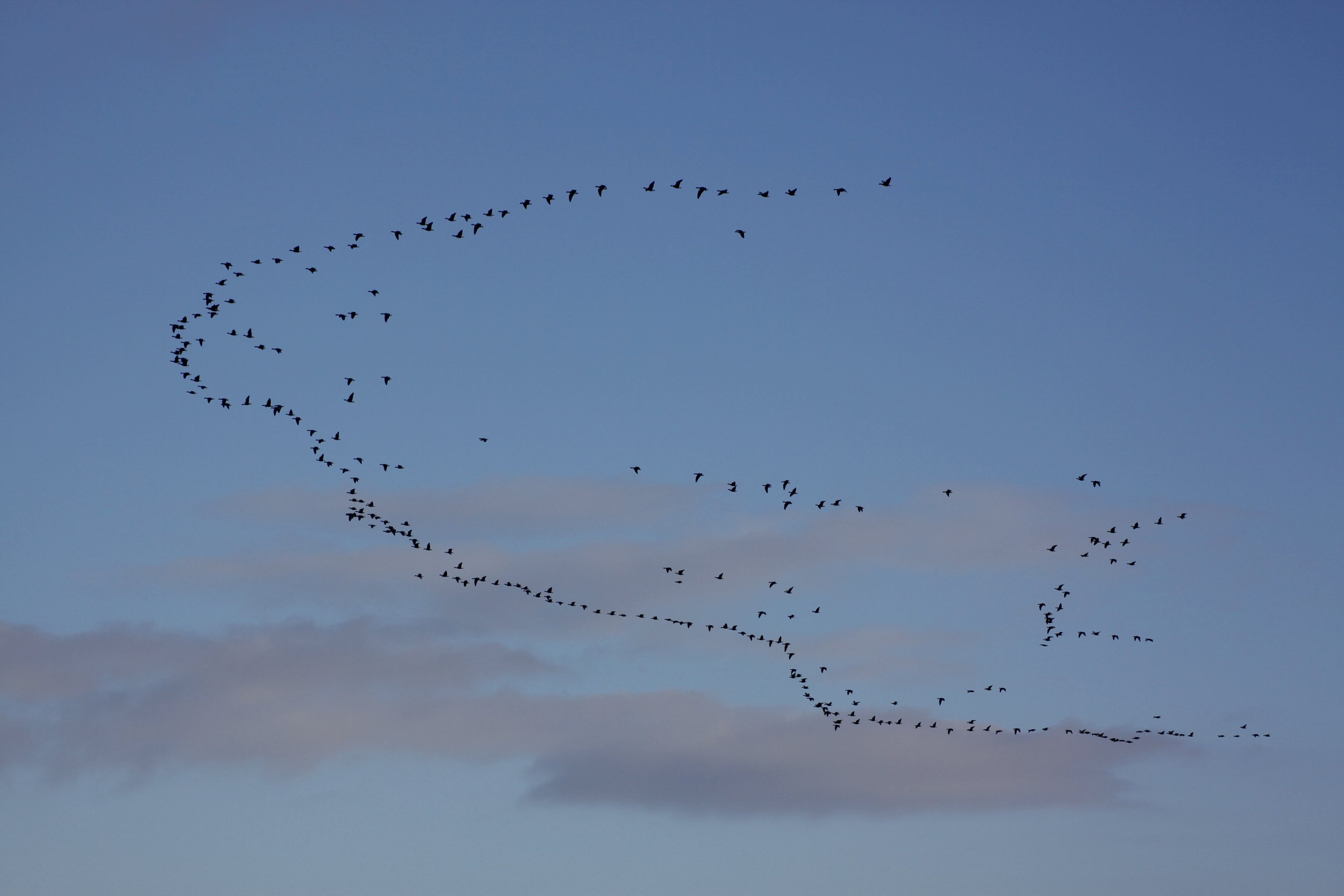Waders and Wildfowl at Sunderland Point.
This is an abridged version of article that was written by Alan in 2021 at the request of Wader Quest, a highly respected international wildlife journal. It is of great interest and still relevant today. The last paragraph is priceless, the photos magical.
Lapwing on the causeway: From the collection of Alan Smith
The tidal river Lune with its vast mudflats, sandbanks and inter tidal marsh areas, attracts vast numbers of wader birds especially during the winter months to feed on the riches on offer within this tidal estuary.
This is a Site of Special Scientific Interest, a RAMSAR (Internationally important wetland), a Special Protection Area and a recognised conservation area. Unfortunately, we are also greatly troubled with unruly dog walkers/owners disturbing the wildlife and is a massive problem throughout the UK.
One of the main winter spectaculars is a wader roost that gathers on the marsh area to the west of Sunderland Point, its official name is the Middleton Wader Roost, it is one of the British Trust for Ornithology, Wetland Bird Survey (WeBS) count areas, Knots gather in their thousands.
Knot and Bar Tailed Godwit: From the collection of Alan Smith
Going back to January 2011, I met Garry Sharples - who does the count for the Middleton wader roost - I mentioned to Garry that I counted 23,500 to which Garry replied he had 24,000. I was very disappointed to have missed counting the 500! This record still stands. The numbers have dropped away in the following years, but 2019 saw an increase, and my recent visit in March 2021, has shown another positive rise. I estimated 15,000 over preceding years which is very encouraging.
In March we have an increase in population over the rest of the winter months (discounting January 2011), as they are working their way slowly northwards on the start of their migration. Together with Knot, the roost comprises Dunlin, Grey Plover, Redshank, Curlew, Oystercatcher, Black Tailed Godwit and Bar Tailed Godwit, Cormorant Gulls, Shelduck, Little Egret and Widgeon, with Common Snipe in the rushes. All these species total a very impressive number and is a fine example of why the Morecambe Bay complex is of international importance.
Two other species we have over winter in large numbers are Golden Plover and Lapwing. Golden Plover can be seen on the sand banks to the east of Sunderland Point. With over a thousand birds, on a sunny winters day you don’t require binoculars to identify the wonderful golden colour of their plumage. Lapwings visit us in numbers over 3,000, of which a very large percentage will be visitors from Europe. Both species can also be found on inland pasture fields enjoying a diet of worms when the tide is in and feeding grounds flooded.
A success story of increasing numbers in the last few years is that of the Godwit, I counted in excess of 3,500 Black Tailed Godwit on the wader roost during February 2021, my highest ever sighting and indeed as I write this article on the 7th March 2021 we have several hundred roosting and feeding on the mudflats near the house, in their chestnut red breeding plumage all ready for the long migration to Iceland. A little further away are 800 Bar Tailed Godwit roosting, all to be disturbed shortly with the flood tide.
Bar Tailed Godwit: From the collection of Alan Smith
Another winter spectacular are large number of Pink Foot Geese that arrive to our area from Iceland, they congregate mainly in the Fylde, geographically and for ease of recognition it is a vast area to the east of Blackpool and to the south of the Lune estuary. Numbers are now around the 30,000 mark. Because of such a large gathering they can be seen flying in the local area in large skeins searching out areas for foraging. In the late afternoon you can hear before seeing when they return to their roost site. It is quite magical to hear them calling when flying over on a lovely moon lit evening.
Pink Footed Geese heading south, arriving after their long flight from Iceland: From the collection of Alan Smith
During early spring time the winter visitors start to depart, it is another time of wonderment when you awaken one morning and there is not a single Widgeon to be seen anywhere, all gone, who told everybody to leave as one, all heading for the Norwegian and Russian arctic to begin a new cycle of their species. The same with Lapwing, all gone as one big unit although hopefully a goodly percentage will be heading to the high moors and fells of The Forrest of Bowland to breed. Curlews of which we can have close to a 1,000-overwintering leave in a more relaxed manner with some non-breeders staying here throughout summer the European visitors returning to Finland to breed.
Widgeon on the causeway: From the collection of Alan Smith
In my younger days, when there was a lot of ploughing for cereal and green crops, I would be riding on the tractor with our next-door neighbour Harry the farmer and Lapwings would be nesting in the field to be ploughed. Harry would stop the tractor make a scrape in the newly ploughed area and place the eggs within. Shortly after, you would find the Lapwing sitting quite contentedly in her new location, this could happen several times in a single field being ploughed. I think the older methods of farming were possibly more caring, showed more compassion and were a great benefit to the likes of Lapwing and Curlew, now sadly, both in rapid decline with much research now ongoing to try and find the problem.
Alan Smith.




